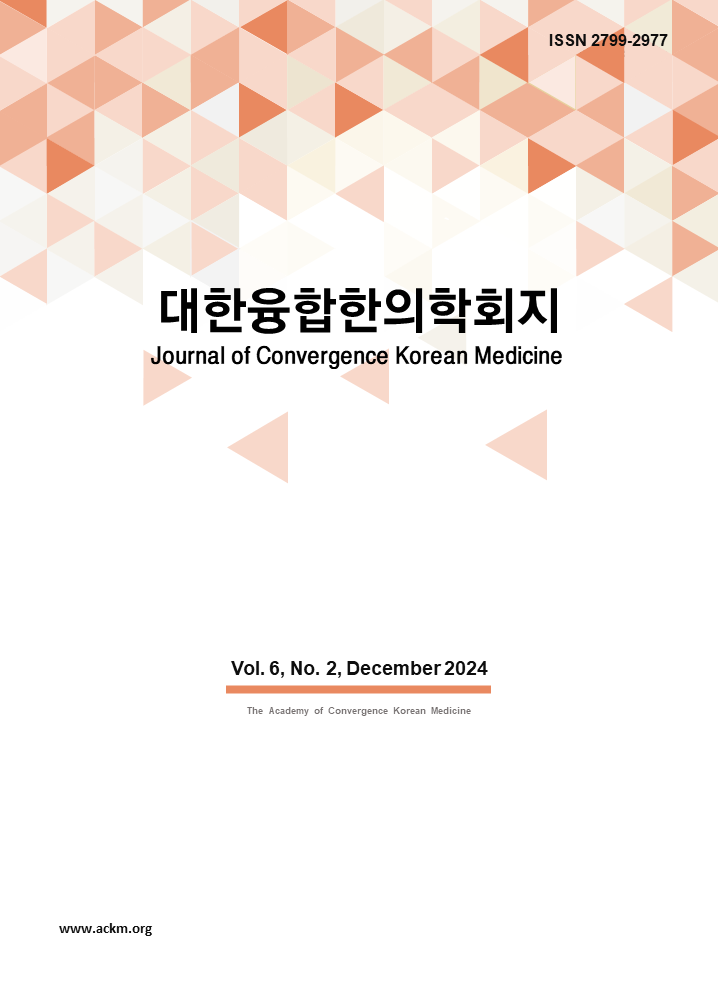5권 1호
초록
Abstract
Objectives: This study was conducted to evaluate the effect of combination treatment of herbal medicine for external use and western medicine for atopic dermatitis (AD). Methods: We searched randomized controlled trials (RCTs) which assess the effect of combination treatment of herbal and western medicine for AD through 8 electronic databases from the start to December 2022. The data synthesis was conducted by using Review Manager (RevMan, ver.5.4.1) and Cochrane risk-of-bias tool was used to evaluate the risk of bias. Results: 13 RCTs were included. The combination treatment group had significantly higher total efficacy rate(p<0.0001) and lower SCORAD score (p<0.00001) than the western medicine treatment group. The adverse event rate was also significantly lower in the combination treatment than the western medicine treatment group (p<0.0001). But there was no significant difference in recurrence rate (p=0.09). Conclusion: This study demonstrates that the combination treatment of herbal and western medicine could be safe and effective for AD. However, due to limits of included studies such as high heterogeneity between the literature and unclear risk of bias, further studies are warranted.
초록
Abstract
Objectives: Gaming disorder has been viewed as a disease in the DSM-5 and ICD-11. Its essential symptoms are loss of control over gaming, gaming becoming a markedly prioritized activity over other activities of daily living, and continued and excessive use of gaming despite negative problems occurring. Methods: Children and adolescents are especially vulnerable to gaming disorder because the striatal pathways related to reward develop earlier than the control regions of the prefrontal cortex. It is also associated with decreased dopamine D2 receptors. Addiction is related to 'want' and is explained by incentive-sensitization. In addition, allostasis, in which homeostasis is continuously achieved at a new target value, is also related to gaming disorder. In addition, personality causes, unchangeable factors, and external factors can influence on the onset of gaming disorder. Results: Prevention is the best solution for gaming disorder, and the role of parents is important. For gaming disorder, bupropion is used, cognitive-behavioral therapy and family-based therapy are also beneficial. Herbal medicine treatment such as Antler velvet and ginseng can be effective. Electroacupuncture and acupuncture using PC6, SP6, and LR3 has a correlation with relieving Internet craving. Ear-acupuncture was also effective in treating addiction. Conclusion: Psychologically, 'want' is an intense longing for reward and motivation, and is related to addiction. This 'want' may rather be related to avoidance, and game addiction in children and adolescents may be due to wanting to escape from academic stress or avoidance of comparison. Therefore, the importance of 'like', which gives pleasure in itself, increases. It can also be explained with Sasang Constitutional Medicine.
초록
Abstract
Objectives : Alcohol-induced liver disease advances as to reactive oxygen species (ROS) and cellular lipid peroxidation increase. We examined the hepatoprotective effects of Zingiber officinale Roscoe rhizome extract (ZR), Pueraria lobata Ohwi flower extracts (PF), and a newly developed herbal juice (HJ), which was a combination of ZR and PF extracts, against ethanol-induced hepatotoxicity. Methods: The study utilized the human hepatoma cell line HepG2 cells to validate the hepatoprotective effect of HJ (50~200 ㎍/mL) against ethanol (EtOH, 700 mM)-induced liver damage. Results: HJ effectively reduced the protein expression of sterol regulatory element-binding transcription factor 1, adiponectin, and AMP-activated protein kinase in EtOH-induced HepG2 cells. The levels of ROS, total cholesterol, and triglycerides, which are the result of various synthesis and lipogenesis processes induced by EtOH in the liver, were reduced by HJ. Furthermore, the activities of alcohol dehydrogenase and aldehyde dehydrogenase, enzymes linked to alcohol degradation, were more effectively downregulated by HJ treatment compared to treatment with ZR and PF alone, all without causing cytotoxic effects. Conclusions: HJ protects the liver by inhibiting EtOH-induced lipogenesis, lowering ROS generation, and improving alcohol degradation, which is more effective than ZR and PF alone. Further, in vivo experiments can offer additional evidence regarding the effectiveness, safety, and underlying mechanism of action of HJ.
초록
Abstract
Objectives: This study was performed to investigate the effect of TJGB on the liver of high-fat diet (HFD)-fed mice and the cell viability of HepG2 cells. Methods: After a week adaptation, 8-week-old C57BL/6N mice were fed with a 45% HFD or normal diet for 3 weeks. For the next 9 weeks, the mice were divided into 6 groups: normal diet group; HFD group; HFD plus orlistat group; HFD plus Ephedra sinica Stapf (ES) group; HFD plus low dose of TJGB group; HFD plus high dose of TJGB group. To estimate the effect of TJGB in the liver of HFD-fed mice, the protein expressions of phospho-acetyl-CoA carboxylase (p-ACC) and liver X Receptor (LXR) were determined by Western blot assay. The cell viability of ES and TJG was also evaluated in HepG2 cells. Results: The administration of TJGB had little effect on the protein expressions of p-ACC and LXR in the liver of HFD-fed mice. And the cytotoxicity was showed above 7.8 ㎍/mL in HepG2 cells. Conclusion: Further research is needed to evaluate the mechanism of TJGB on hepatic steatosis and cytotoxicity in HepG2 cells.

